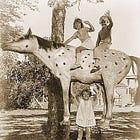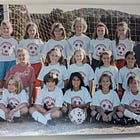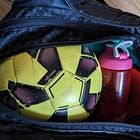ICYMI: Olympic Weightlifting Tips from Gold Medalist Olivia Reeves
The 21-year-old from Chattanooga won the 71 kg weight class at this summer's Olympics. Here are her tips for mastering the Olympic lifts.
This article was originally published in our Guide to 2024 Olympic Women’s Weightlifting. It’s been updated to reflect the athlete’s wins at the 2024 Paris Olympics and the 2024 IWF World Weightlifting Championships.
Olivia Reeves has been moving a barbell since fourth grade. The 21-year-old sociology major practically grew up in her parents’ CrossFit gym, and at age 12, started training in olympic weightlifting with her coach Steve Fauer. “In my mind, it was to get better at CrossFit, and then I realized you can compete in this,” she says.
She’s been competing ever since, winning second place in her first international youth competition in 2019, and building one accomplishment on another with every appearance.
“I never go into a competition expecting to medal,” she says. “I expect to make my lifts.”
At the final Olympic qualifier in April, the International Weightlifting Federation (IWF) World Cup in Thailand, she won the gold and broke three American records with her 118 kg (260 lbs) snatch and 150 kg (330 lbs) clean and jerk. When she won the gold medal in the 71 kg women’s weight class at this summer’s Olympics, she became the first American since 2000 to win an Olympic title in the sport. She followed that up this December by winning the world title, her first, at the 2024 IWF World Weightlifting Championships in Bahrain.
Lifting nerds have highlighted Olivia’s performance for technical proficiency and efficiency, pointing to adjustments she makes in fractions of a second that keep the bar in its proper path while maintaining her balance and control over the weight. Here she shares a few tips for athletes and coaches that have helped her stand the weight up over and over again.
1. Pay attention to how a good lift feels — and replicate that feeling.
You, the athlete, know when your balance is centered or slightly off, when the weight is pulling you forward or back, when one part of the movement is smooth as butter. Any lifting cues that are helpful to you in mastering the lift will simply put that right feeling into words.
“Whether that cue is keep the heels down, stay over the bar, flat feet, or you’re trying to make a sound — there are so many different ways to say the same thing,” Olivia says. “It’s however you think about the lift and however it connects with the feeling you’re trying to replicate of getting a solid lift and not taking a step forward, leaning back, whatever. … What I’m looking for is a feeling.”
2. The lift you just executed will tell you if you did the lift right.
Did you stand the lift right up? Did you rock back on your heels? “The feedback of how the lift goes is how I know that I did something right,” Olivia says.
This goes hand-in-hand with the feeling mentioned above. Once you know how a good lift feels, you can notice the feedback from other lifts to understand what in your technique needs to be tightened up.
3. You are in control of the bar.
“It took me years to realize that once the bar leaves the floor, I have control over what’s going to happen,” Olivia says. “Before, it was just, I lift and I lift and I’m not actively trying to change something in the lift.”
But the lifter is the activating force, which makes the barbell the object of that force.
“You have control over your body and the bar, and there are split seconds that you need to make changes to the lift in order to make it [or] save it,” she says. Intentionally taking control over the bar can eliminate some of the fear people have in executing the olympic lifts, while also helping them move the bar with more power.
Tip for coaches: Stop overloading athletes with lifting cues.
Three cues is too many for an athlete to implement. “The lift is happening so fast,” Olivia says. “You can’t think about the heels and the bar coming back and then standing all the way up.”
Overthinking slows athletes down, and a slow lift is a missed lift.
Instead, limit yourself to one new cue per session. And before you choose that cue, let your athlete do about 10 reps so you can identify the biggest issue in their lift and tailor your cue to that. Don’t nitpick every little thing. If your athletes have the overall technique down, focusing on recreating the feeling of the good lift will help them home in on the little things they need to do to perfect their technique.












